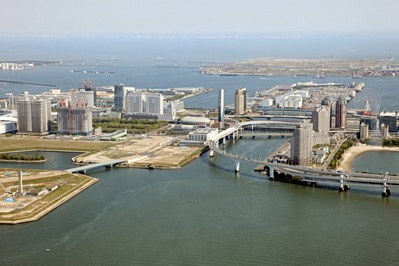Tokyo's population declines as residents continue to move to Western Japan
Tokyo's population has recently seen a net decrease as residents fled the city following the March 11 Tohoku Disaster and the nuclear emergency.
The hiring season and university enrollment schedule in Spring/Summer usually sees the Tokyo population rise. However, the statistics for June and July showed that the number of people who moved out of the Tokyo metropolitan area exceeded the number who moved into the area, causing the total population to decrease by 4,000 in greater Tokyo, and 6,400 in Tokyo alone. This is despite the thousands of new residents moving in from the Tohoku region.Read more
The "World's Oldest Manga Cafe" to close down
 Manrakuen Comic Paradise is a Japanese Manga-Kissa (a comic book library and cafe) near Jinbocho Station in Tokyo where customers pay 400 year per hour to sit and read from the collection of over 20,000 comic books.Read more
Manrakuen Comic Paradise is a Japanese Manga-Kissa (a comic book library and cafe) near Jinbocho Station in Tokyo where customers pay 400 year per hour to sit and read from the collection of over 20,000 comic books.Read more
The leaning tower of Sendai
 Sunny Heights Takasago, a 14-storey, 189 unit apartment building in Sendai City, suffered serious damage during the March 11 Earthquake which left it tilting on an angle.
Sunny Heights Takasago, a 14-storey, 189 unit apartment building in Sendai City, suffered serious damage during the March 11 Earthquake which left it tilting on an angle.
Following the earthquake, 400 residents evacuated their apartments and stayed in the 1st floor meeting area or at the nearby school hall. The pillars in Sunny Heights had developed cracks and the reinforcing steel was poking out of the concrete. From a distance it was easy to see how much the building was leaning.Read more
Will people still buy high-rise apartments?
 This is a translation of an article that appeared in Japanese tabloid Nikkan Cyzo, so take it for what it is.
This is a translation of an article that appeared in Japanese tabloid Nikkan Cyzo, so take it for what it is.
The March 11 Tohoku Disaster changed the mindset of many Japanese. The real estate market was no exception, with many a shift in the mentality of buyers.Read more
Land purchases in tsunami-affected prefectures to be monitored

The Ministry of Land, Infrastructure, Transport and Tourism announced on August 1 that plans have been made to monitor land transactions made in tsunami-affected prefectures in Northern Japan. From now on, experts are predicting a sudden jump in prices for elevated land in the disaster-stricken areas, so the three affected Prefectures of Iwate, Miyagi and Fukushima will be monitoring and sharing the data of land transactions.
As the coastal areas that were devastated by the March tsunami move towards rebuilding, there is growing fear that the elevated tracts of land that escaped the tsunami will see steep price rises as real estate companies and developers seek to buy up the land.Read more
Increased risk of large quake in Miura-hanto fault group

- Earthquake risk has increased as a direct result of Tohoku earthquake
- 11% chance of Magnitude 6.7 quake occurring within the next 30 years
The Japanese Government's Earthquake Research Committee announced on July 11, 2011, that the March 11 Tohoku earthquake has increased the chance of an earthquake occurring along the Miura-hanto fault group.
It has been predicted that there is a 11% chance that the Miura-hanto fault group will produce an earthquake with a magnitude of 6.7 within the next 30 years. This fault group is classified among the most active faults in Japan.
Experts warn that a large earthquake caused by the Miura-hanto fault group could produce a Read more
Apartment being built directly on top of fault line
In Toyonaka City, Osaka, construction work is continuing on a 14-storey apartment building on a site that is directly above an active fault line.
"Uniheim Senri Momoyamadai" is located in Higashi-izumigaoka 3 Chome and is directly above the Butsunenjiyama Fault - an active fault line that runs from the north of Toyonaka and south to Suita in Osaka. It is an extension to the Uemachi Fault, a relatively active fault line which has a 2~3% chance of producing an earthquake within the next 30 years, and a hypothesized magnitude of 7.2 would result in an estimated death toll of 42,000.Read more
